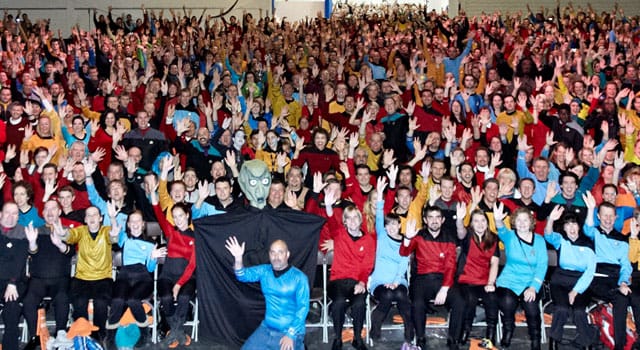This post is a continuation of a series of posts investigating Henry Jenkins’ concepts of “Convergence Culture” and “Transmedia Storytelling”.
See the full series here.
Henry Jenkins defines Fan Culture in their book Convergence Culture as “Culture that is produced by fans and other amateurs for circulation through an underground economy and that draws much of its content from the commercial culture.” (2006, p. 285).

Operating behind closed doors and circulating their products through an underground economy, away from official channels and through word of mouth and in-person sales at conventions would aid in fans avoiding the eyes of the big production companies who may wish to stop them.
In their 2013 book Textual Poachers, Jenkins defines what they mean when they say they are a fan by comparing their mentor’s definition:
Later, Jenkins discusses how the term “fan” strayed away from its original meaning and became a “more negative connotation[s]” (p. 12), before being used by 19th century journalists to describe followers of professional sports teams. Citing other works, (Campbell, 1956; Jewett & Lawrence, 1977), Jenkins outlines how “science fiction television and its fans constitute a kind of secular faith”, with an example of fans of Star Trek (Roddenberry, Arnaz & Ball, 1966-1969) and their devotion to the characters of Captain Kirk and Mr Spock.

They discuss their involvement within an e-mail discussion list dedicated to Beth Sullivan and Carl Binder’s Dr. Quinn, Medicine Woman (1993-1998), importantly outlining how different members were considered experts in specific subjects surrounding the television show and would be expected to comment on such discussions.
Bird argues that the internet “is a new tool of communication that can be used in many different ways, just as other forms of communication can. It is certainly changing social interaction for many participants”. (p. 56). A member of the community uses the metaphor of a quilt to describe the community, “where each of us comes to share and we bring our own pieces of fabric that make us unique; sewing the different offerings together to make something special and memorable.” (p. 59).
- Bird, S. E. (2003). The Audience in Everyday Life. Routledge.
- Campbell, J. (1956). The Hero with a Thousand Faces. New World Library.
- [Convergence Culture (Jenkins, 2006) cover]. (n.d.). Retrieved 25 January 2025, from http://henryjenkins.org/aboutmehtml
- Roddenberry, G., Arnaz, D., & Ball, L. (1966-1969). Star Trek [TV series]. Desilu Productions; Norway Corporation; Paramount Television.
- Jenkins, H. (2006). Convergence Culture. New York University Press.
- Jenkins, H. (2013). Textual Poachers (2nd ed.). Routlege.
- Jewett, R. & Lawrence, J. S. (1977). The American Monomyth. Anchor Press.
- [Star Trek fans in costume]. (n.d.). Retrieved 28 January 2025, from https://images.app.goo.gl/UEHNsB6DoTzwi1f3A
- Sullivan, B., & Binder, C. (Executive Producers). (1993-1998). Dr. Quinn, Medicine Woman [TV series]. CBS; Sullivan Company.
APA7
Cable, J. (2025, Apr 05). Fan Culture – Henry Jenkins. JCableMedia.com. https://www.jcablemedia.com/2025/04/05/fan-culture-henry-jenkins/.
Chicago
Cable, John. “Fan Culture – Henry Jenkins.” JCableMedia.com. April 05, 2025. https://www.jcablemedia.com/2025/04/05/fan-culture-henry-jenkins/.
Harvard
Cable, J. (2025). Fan Culture – Henry Jenkins. Available at: https://www.jcablemedia.com/2025/04/05/fan-culture-henry-jenkins/ (Accessed: 17 April 2025).